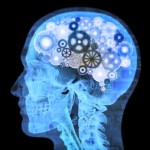 I had the good fortune of hearing Daniel Goleman and Dan Siegel speak at a recent Institute of Coaching Professional Association conference in Boston. Mr. Goleman popularized emotional intelligence for managers and Dan Siegel, MD, is a professor of psychiatry at UCLA’s School of Medicine. Both of them talked about the brain, and I wanted to tell you about some new things I learned.
I had the good fortune of hearing Daniel Goleman and Dan Siegel speak at a recent Institute of Coaching Professional Association conference in Boston. Mr. Goleman popularized emotional intelligence for managers and Dan Siegel, MD, is a professor of psychiatry at UCLA’s School of Medicine. Both of them talked about the brain, and I wanted to tell you about some new things I learned.
- Emotional intelligence is of even greater value among leadership positions vs. jobs of all kinds. Compared with cognitive intelligence, which accounts for about a third of distinguishing competences among jobs of all kinds, EI acounts for 66%. But when you segment the data on ‘leadership,’ the figures are now 15% and 85%. Differences of this magnitude are not just significantly statistically; they remind us that base line intelligence is insufficient for career success, let alone significant accomplishment.
- Brain activity and performance are related. Mr. Goleman presented a graph showing that optimum performance is obtained when brain activity is midway between low and high. At a low level, you’re bored; at a high level, you’re stressed. He suggested that managers wanting to create an environment of optimal performance set clear goals, provide performance feedback and hand out stretch assignments. (You might also want to see the book Flow by Mihaly Csikszentmihalyi, which is quite readable.)
- The ‘Competency Framework’ is composed of four interconnect cells: Self-Awareness; Social Awareness; Relationship Management; and Self-Management. What binds them together is the need to give your full presence and attention and to do good work that demonstrates excellence and competence. And when it comes to interacting with others, new research demonstrates that in conversation we, as humans, stimulate the brains of the other person we’re speaking to. “We stimulate each other — it helps us stay on the same page and causes social coordination. Emotions move from the most powerful person outward,” said Mr. Goleman. It feels good, he says, to be in a state of ‘non-verbal synchronicity.’
- Because leadership styles affect the work climate, ‘it is best when a manager uses four or more styles from among these six’:
- Visionary: provides long-term direction and vision
- Coaching: develops employees for the long-term
- Affiliative: creates harmony in work relationships
- Democratic: builds commitment through collaboration
- Pacesetting: pushes to accomplish tasks
- Commanding: demands compliance
Which of these six do you use? I’ve rarely used #6.
- Mr. Goleman ended his discussion on the competences of ‘social intelligence.’ While you might have seen these before, I’m including them here because they are worth remembering:
- Do you understand what motivates other people, even those from different backgrounds?
- Do you sense others’ feelings?
- Do you appreciate the organization’s culture and values?
- Do you understand unspoken norms?
- Do you coach and mentor others?
- Do you provide feedback helpful for development?
- Do you solicit input from everyone?
- Do you support all team members and encourage cooperation?
- Dr. Siegel covered three areas entirely new to me that I’d like to tell you about.
- “The Healthy Mind Platter” consists of Sleep Time, Physical Time, Focus Time, Time In (reflect inwardly), Down Time, Play Time and Connecting Time. To extract the most from these states, Dr. Siegel recommends ‘connecting with gratitude and generosity to people and the planet. It is your responsibility to be playful.’
- A “Triangle of Well-Being” has at its three points: Mind (includes ‘awareness’ and ‘subjective experience’), Relationships (‘context of our mental living’), and the ‘Embodied Brain’ (that regulates the flow of energy and information). Inextricably linked, you cannot separate one from the other if you want to feel and be well.
- Being fully present and open means we can and will:
- Thrive within uncertainty
- Be open to possibilities
- Cultivate human connections
- Integrate and harmonize all these elements
What I learned reinforced my belief that the brain is not just a wonderful gift to behold; it also contains so much more potential than we can even imagine. And that if we use it to connect with others, we’ll all be better off.
